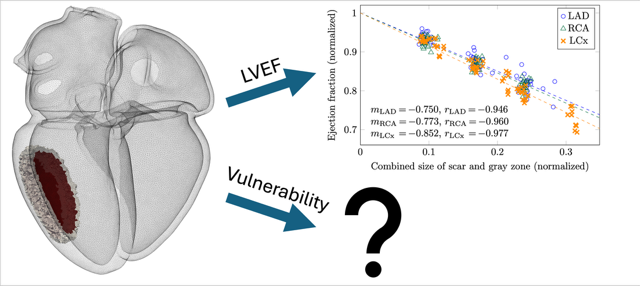Assessment of Ventricular Arrhythmia Vulnerability
- chair:Computational Cardiac Modeling
- type:Master thesis
- tutor:
-
Motivation
Ventricular fibrillation can lead to sudden cardiac death (SCD). To prevent this life-threatening event, patients with high risk of ventricular arrhythmia receive an implantable cardioverter defibrillator (ICD). A key clinical indication for ICD implantation is a reduced left ventricular ejection fraction (LVEF < 35 %). However, clinical studies have demonstrated that scar size is a more reliable predictor of SCD risk than reduced LVEF. In a recent simulation study, we have shown that scars with similar size can lead to different LVEF reductions based on their exact location in the left ventricle. For these scars, we now want to add an assessment of their vulnerability to ventricular arrhythmia.

Project Description
In this project, we aim to investigate ventricular arrhythmia vulnerability by means of advanced computational cardiac modeling and simulation. Specifically, you will:
• Run electrophysiology simulations on multiple biventricular geometries
• Incorporate realistic scar characteristics for scars in different regions of the left ventricle
• Assess the arrhythmia vulnerability associated with these scars using simulations
• Compare the predicted vulnerability with the corresponding reduction in LVEF caused by each scarWhat you will gain
• Hands-on experience in cardiac electrophysiology modeling and simulation
• Skills in computational methods, data analysis, and translational researchNotes
• The thesis can be written in German or English
• Programming skills (C++, Matlab, or Python) welcome
• Basic knowledge about the physiology of the human heart welcome

